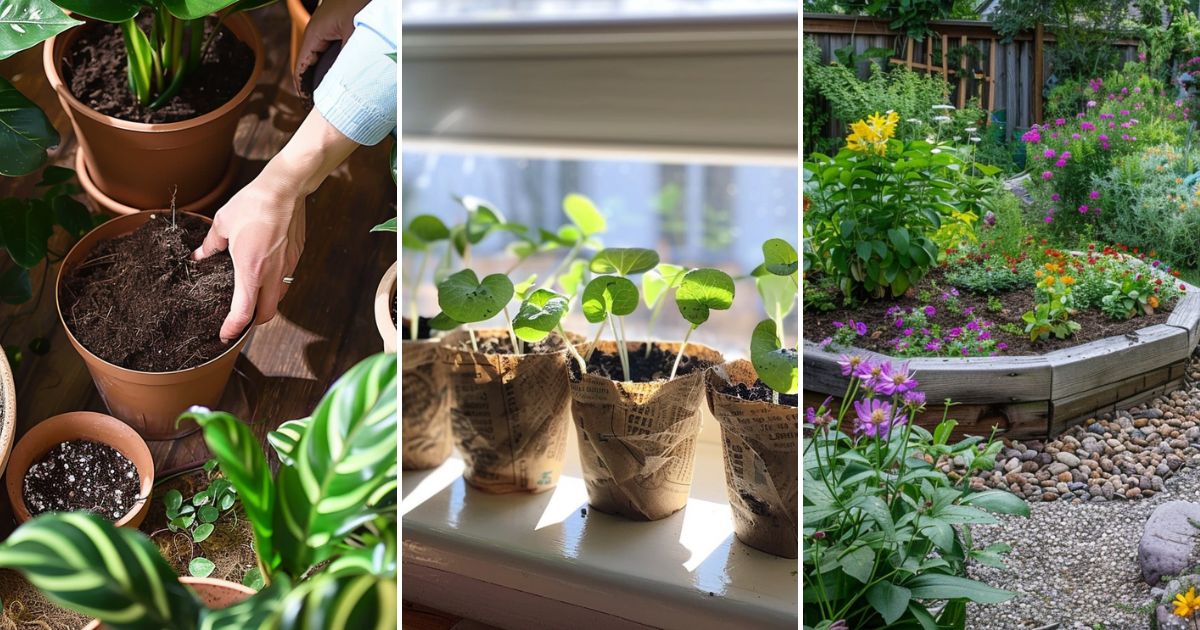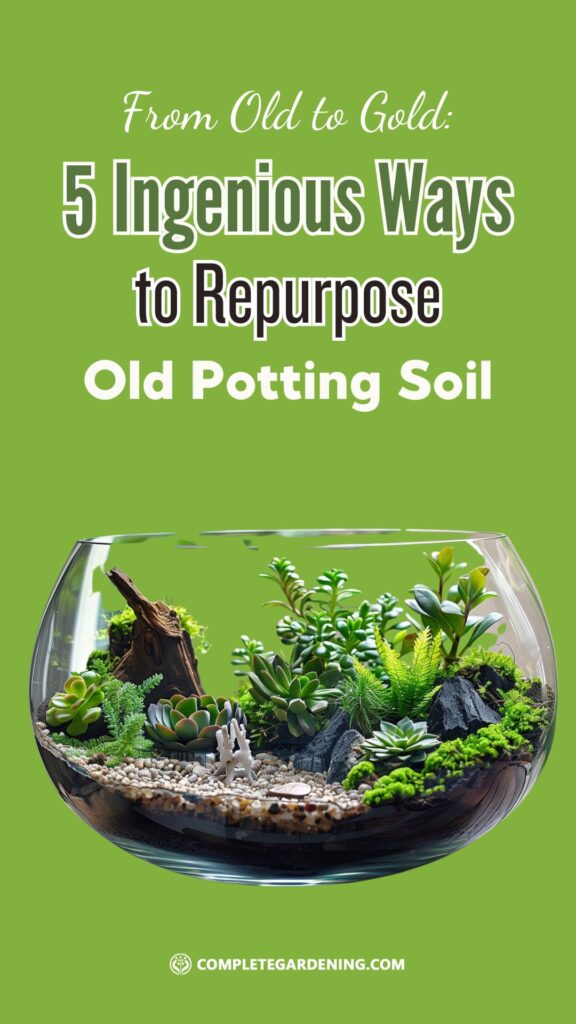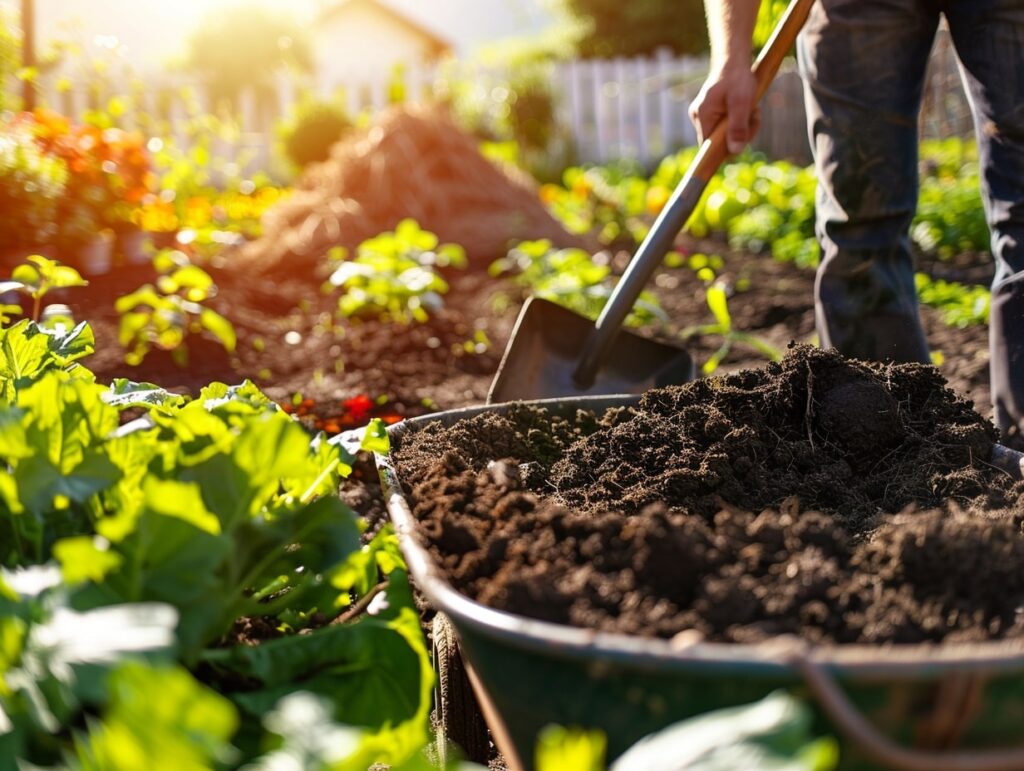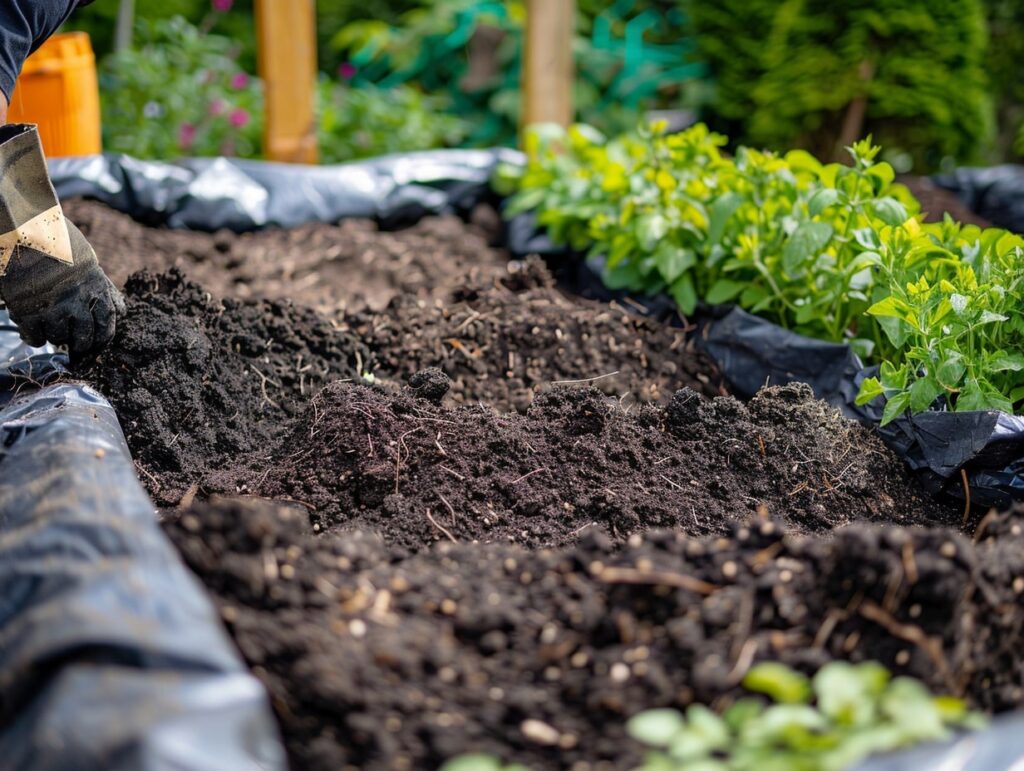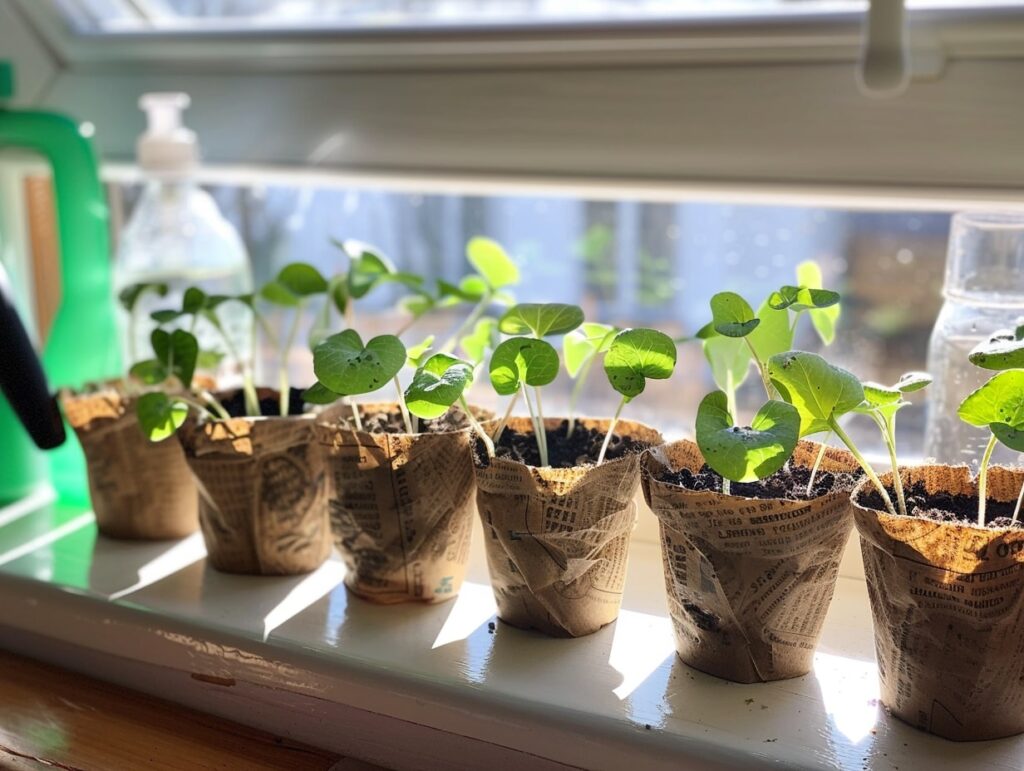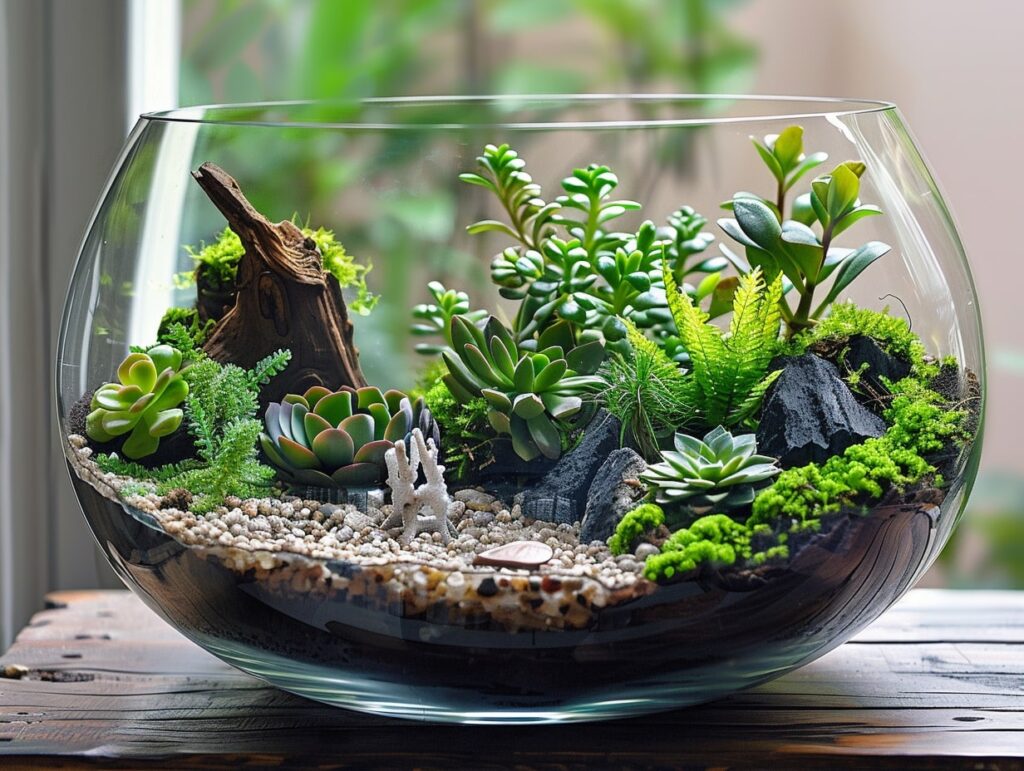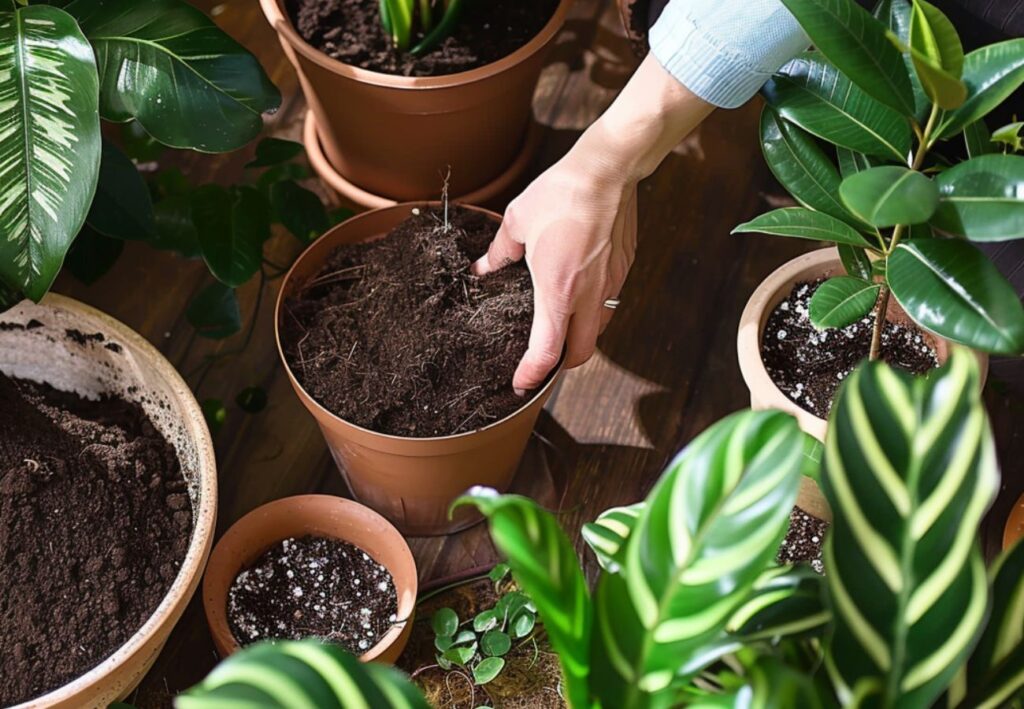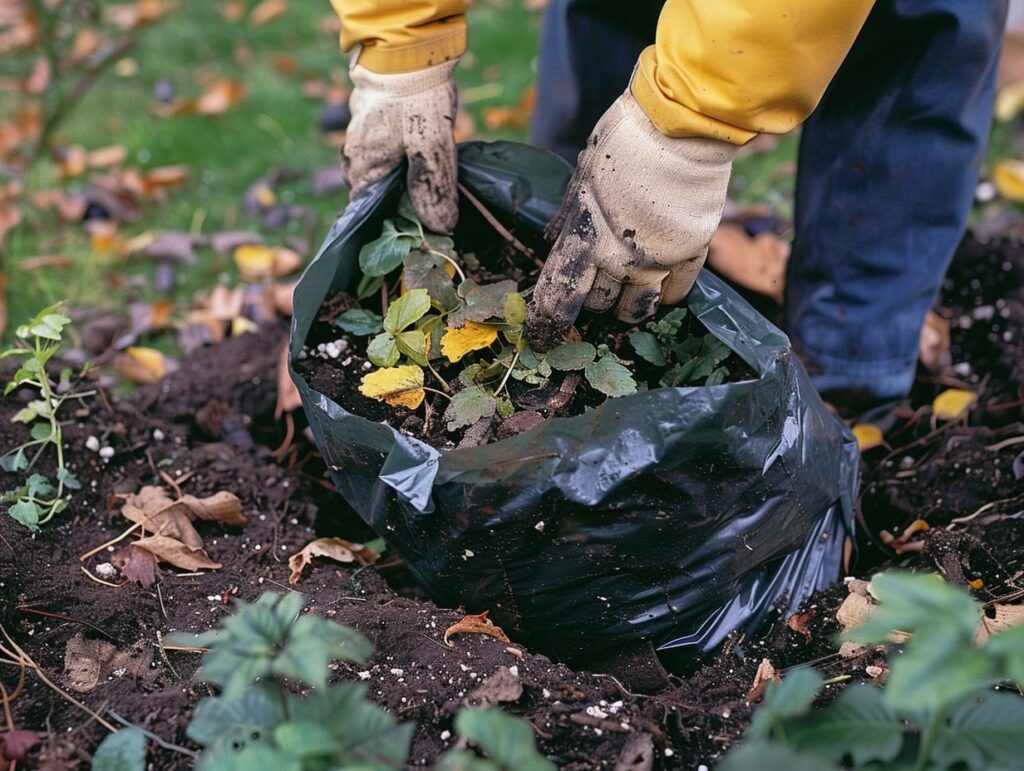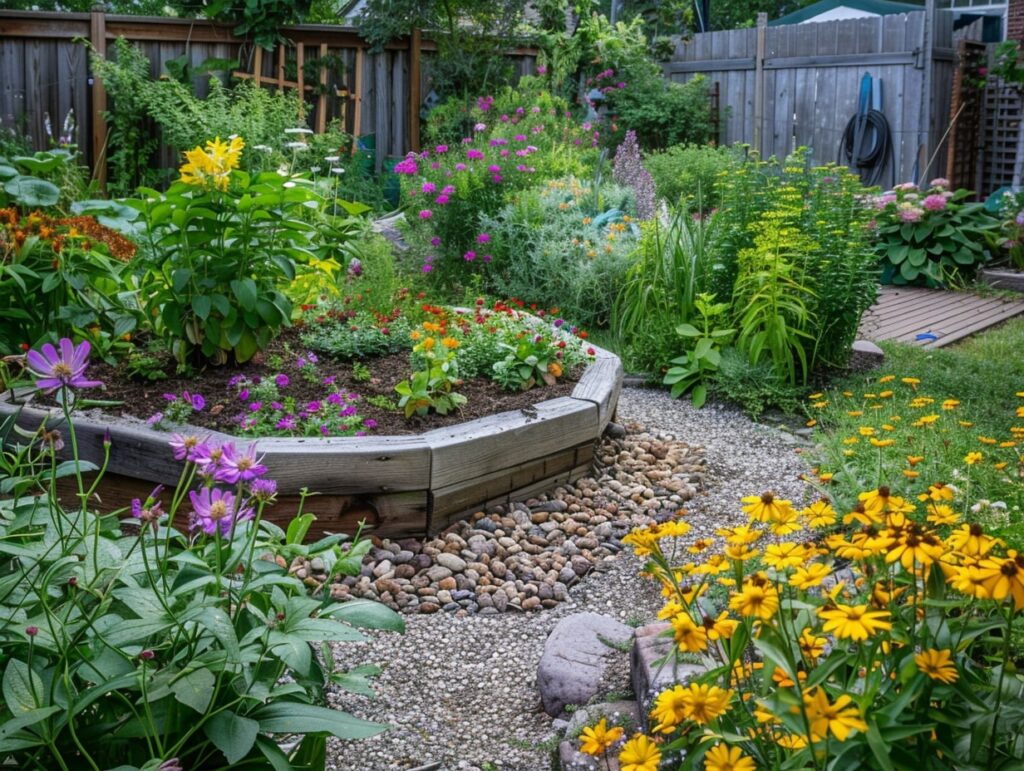Do you have piles of old potting soil sitting in your garden shed, taking up space and seemingly destined for the trash? Don’t throw it away just yet!
You can repurpose it in several creative and eco-friendly ways, turning those neglected bags into valuable assets for your garden.
Rejuvenate your lawn by adding the old soil to bare patches. Mix it with fresh compost to refresh its nutrients, creating a great medium for reseeding areas needing a little love.
Or, use the old soil as a base for raised beds, adding a nutrient-rich top layer for growing vegetables.
Before you get started, it’s crucial to know two important things you should never do with old potting soil. Find out what those are to avoid potential problems and make the most out of your gardening resources.
This guide will provide you with useful tips and practical advice to turn that old soil into gardener’s gold.
Revitalizing Your Garden
Rejuvenating old potting soil can breathe new life into your garden. Properly amended, this soil can become a rich, fertile medium for your plants.
Nutrient Replenishment Techniques
To refresh your old potting soil, focus on replenishing essential nutrients. Start by mixing in compost. Compost adds organic matter, helping with water retention and providing a steady release of nutrients. Add about 25% compost by volume to your old soil.
Next, consider adding fertilizers. Slow-release, balanced fertilizers (like 10-10-10) are ideal since they supply essential nutrients over time. Follow the manufacturer’s instructions for the right amounts.
Finally, incorporate soil amendments such as perlite or vermiculite. These improve soil structure, enhancing aeration and drainage. A handful mixed into each plant pot can work wonders for your garden’s vitality.
Mixing with New Soil
Blending old potting soil with new ensures a balanced mix for your plants. Aim for a 50-50 ratio, as this provides a good balance of old and new nutrients. Use high-quality potting soil to maximize the benefits.
Begin by thoroughly mixing the old and new soils. This step ensures an even distribution of nutrients and prevents root shock when transplanting.
If you have large quantities of old soil, layering might be practical. Alternate layers of old and new soil in your garden beds. This method improves root penetration and moisture retention.
Mixing old soil with new soil can extend its usability and maintain garden health.
Eco-Friendly Crafting Ideas
Old potting soil can find new life in creative and sustainable projects that add a touch of nature to your home. Discover two fun and simple ways to repurpose used soil in eco-friendly crafts.
Homemade Seed Starters
Used potting soil is perfect for creating homemade seed starters. Fill biodegradable containers like eggshells, toilet paper rolls, or newspaper pots with the old soil. This provides a nutrient-rich environment for seeds to germinate and grow strong roots.
Place the seed starters in a sunny spot and water regularly. Once the seedlings have matured, transplant them directly into your garden. The biodegradable containers will break down naturally, enriching your garden soil, and reducing waste.
Decorative Terrariums
Old potting soil can be used to create beautiful, low-maintenance terrariums. Choose a glass container with a lid if you prefer a humid environment or an open container for succulents and cacti.
Layer gravel or small pebbles at the bottom for drainage, then add a layer of activated charcoal to keep the soil fresh.
Fill the container with the used soil and arrange small plants like moss, ferns, or succulents. Decorate with stones, figurines, or other small accessories to personalize your terrarium.
This provides an attractive, eco-friendly addition to your home decor using repurposed materials.
Household Applications
You can repurpose old potting soil around the home to improve plant care and boost the efficiency of your household gardening efforts.
Drainage Improvement for Indoor Plants
Using old potting soil can enhance the drainage for your indoor plants. Often, commercial potting soil becomes compacted over time, which hinders water flow.
Mixing old soil with fresh soil can break up heavy clumps. This promotes better root health.
A simple ratio to follow is 1:1 old potting soil to fresh potting mix.
This ensures there’s enough texture to keep the soil loose. Additionally, adding perlite or small pebbles can further improve drainage.
Keep an eye on the plants’ response to ensure they thrive. Proper drainage reduces the risk of root rot and overwatering.
The Don’ts of Used Potting Soil
Reusing potting soil can be an excellent way to save resources, but there are critical mistakes to avoid. Avoid using diseased soil, and don’t overuse it in a single pot.
Avoid Using Diseased Soil
Always be cautious if your old potting soil came from plants that showed signs of disease. Reusing soil from diseased plants can introduce pathogens to your new plants. Instead, it’s best to dispose of this soil safely to prevent the spread of diseases.
Infected soil can harbor harmful bacteria, fungi, and viruses. These organisms can persist in soil for a long time and infect new plants. A quick way to tell if soil might be diseased is if the previous plant had yellowing leaves, wilting, or root rot.
To avoid contamination, always remove as much old soil from the roots as possible before mixing it with fresh soil. Sterilizing soil can also help, but it may not be 100% effective against all pathogens. Better safe than sorry; toss questionable soil.
Don’t Overuse in a Single Pot
Using too much old soil in a single pot can lead to poor plant health. Old soil might lack the necessary nutrients new plants need to thrive. It’s best to mix old potting soil with new soil to maintain a balanced nutrient profile.
When potting a new plant, aim for a 50/50 mix of old and new soil. This helps provide essential nutrients while also improving the soil structure. Overusing old soil can also lead to compacted and poorly draining soils, suffocating plant roots.
To maintain a healthy growing environment, always ensure your pots have proper drainage holes and avoid overwatering. Mixing compost or organic matter can rejuvenate old soil, but balance is key in maintaining plant health.
From Waste to Wealth in Your Garden
Reusing old potting soil is not just a sustainable practice; it’s a smart way to enhance your gardening efforts. By revitalizing and repurposing old soil, you can breathe new life into your garden, create eco-friendly crafts, and improve plant care.
However, it’s crucial to avoid using diseased soil and overloading pots with old soil to maintain healthy and thriving plants.
Follow these tips to turn your old potting soil into a valuable resource, transforming your gardening routine and contributing to a greener environment.
